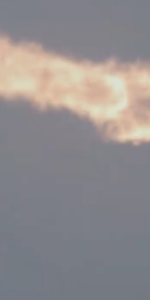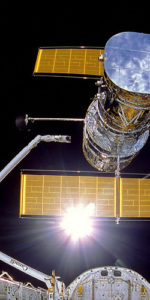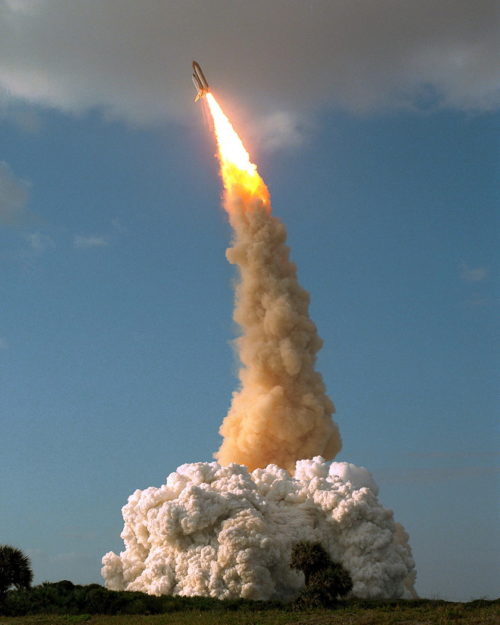
Thirty years ago today, shuttle Discovery and her five astronauts rocketed higher above the Home Planet than any human crew since the end of the Apollo lunar landing era. By the time STS-31 Commander Loren Shriver, Pilot Charlie Bolden and Mission Specialists Steve Hawley, Kathy Sullivan and Bruce McCandless settled into orbit, they were soaring at an altitude of some 380 miles (610 km) and for the first time since Apollo it was possible to see the curvature of Earth and its nature as a “real” planet. And the singular reason for that extreme altitude was STS-31’s primary payload, the 43-foot-long (13-meter) Hubble Space Telescope, described by former NASA Administrator Jim Beggs as the eighth wonder of the world, which promised to observe the universe in unparalleled detail.
But getting the huge Hubble into orbit posed two conflicting issues. It had to launched as high as possible, above the “sensible” atmosphere to enable it to study the cosmos, whilst at the same time flying in a low enough orbit for the shuttle and its finite propellant reserves to reach. And “reaching” Hubble was not just the job of STS-31, for the telescope had long been planned to be visited by successive shuttle crews over perhaps 15 years or more for routine servicing, upgrades and the replacement of scientific instruments. “It’s a big vehicle, with a lot of cross-section,” Sullivan said of Hubble. “You need to get it into a very low-density region, very high. Its control systems…are wimpy, in a sense. Magnetic torquers and control moment gyros are not high-impulse things, so you want to get it pretty high, so that the pointing systems can keep it still for long observations.”
In the months before the loss of Challenger, Hubble was scheduled to fly in October 1986. But after more than a decade in development and a multitude of problems with contractors, it had fallen 30 percent over-budget and several months behind schedule. The destruction of Challenger in January 1986 and the grounding of the shuttle fleet for nearly three years, perversely, allowed the Hubble team some breathing room to complete a major thermal vacuum chamber test, add more powerful solar arrays, enhance redundancy of critical systems, improve flight software and install better connectors. Failure-prone nickel-cadmium batteries were replaced with more capable nickel-hydrogen ones.
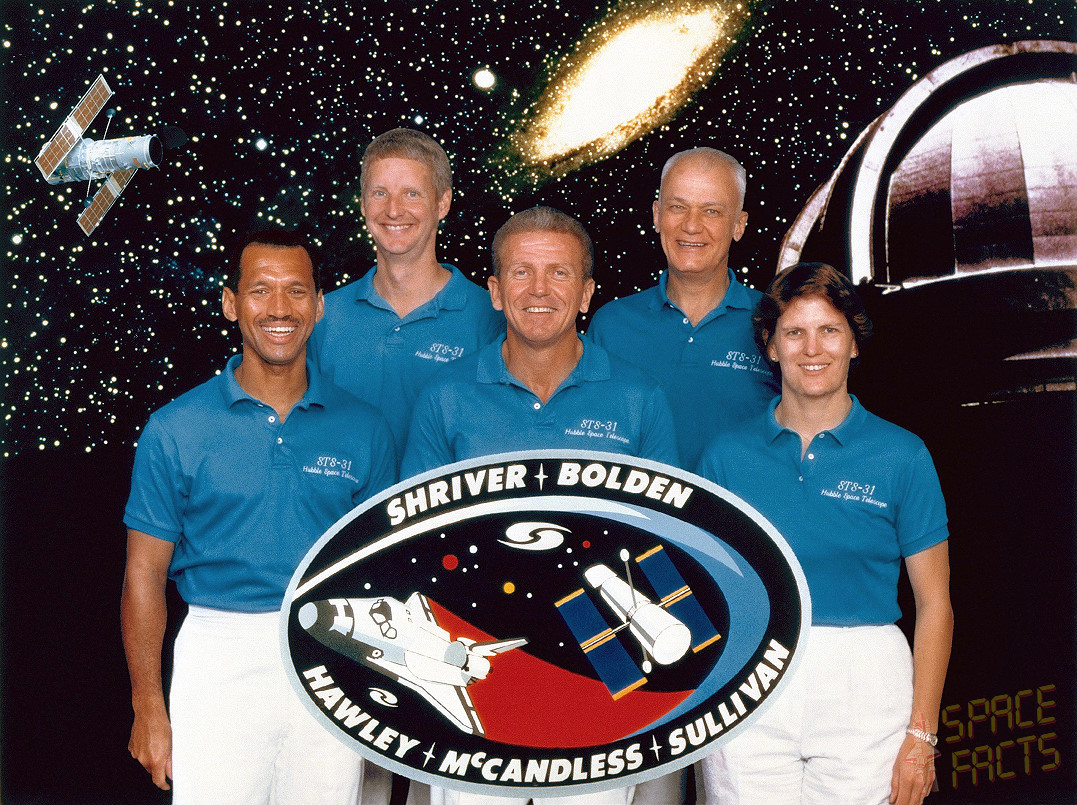
Crew members for the Hubble deployment flight had been assigned in 1985, although the original commander, John Young, was removed from the crew during the post-51L down time. His replacement, Loren Shriver, was assigned with the rest of the original crew in March 1988, tracking a revised launch date of no sooner than June 1989. But with several “infrastructure-critical” shuttle missions planned to fly ahead of Hubble—including two Tracking and Data Relay Satellites (TDRS), the Magellan and Galileo planetary probes and several national security payloads for the Department of Defense—the STS-31 astronauts found themselves at the back of the queue when flights resumed in September 1988. Eventually, the mission was anchored to a launch date in the March-April 1990 timeframe, which carried its own problems. “The year 1990 was close to a solar maximum year,” said Sullivan, “so the envelope of the atmosphere is physically larger.”
The result was that Hubble had to be inserted into a higher orbit, which in mid-1989 was determined at approximately 380 miles (610 km). To get this high demanded a long-duration firing of Discovery’s Orbital Maneuvering System (OMS) engines, lasting more than five minutes…and the effect was that 50 percent of their available propellant would be expended just to get to their desired altitude. The mission parameters were further complicated by the need for enough propellant to re-rendezvous with Hubble in the event of a malfunction after deployment and enough to re-deploy it again and enough to perform another separation maneuver and enough to conduct another long OMS burn to get back to Earth. With such tight margins, Shriver’s crew trained extensively on their response to propellant alarms. On ‘ordinary’ shuttle missions, the first prudent step after such an alarm would be check if it was a false alert; on STS-31, there existed no such luxury and the astronauts would have to assume that it was a real leak and lower their orbit or return to Earth immediately.
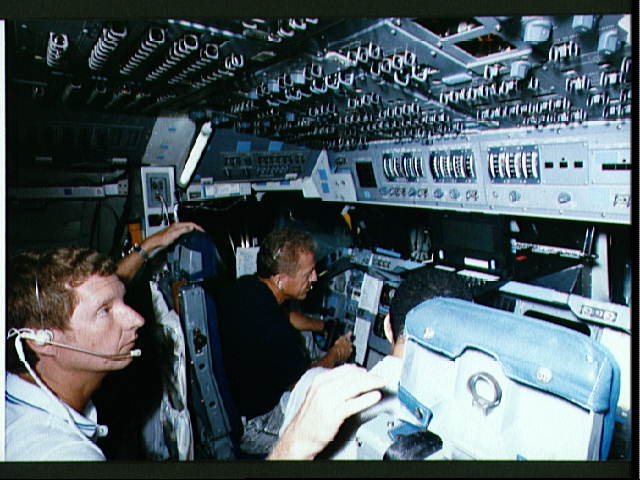
Yet the launch was eagerly anticipated by the astronomical community, for Hubble and its five scientific instruments—a wide-field planetary camera, a faint object camera, a high-resolution spectrograph a faint object spectrograph and a high-speed photometer—were expected to enable observations deeper and earlier into the Universe than ever before. The first launch attempt on 10 April 1990 proceeded normally, with the five astronauts strapped into their seats aboard Discovery. The countdown clock ticked smoothly down to T-4 minutes, after Bolden had activated the ship’s Auxiliary Power Units. Then, all at once, abnormal pressure and turbine speeds in one of the APUs and a scrub was called.
In the days that followed, the troublesome APU was removed and replaced and a revised launch attempt was set for 24 April. Again, the crew donned their bulky orange partial-pressure suits and headed for the launch pad. And again, they were strapped into their seats aboard the shuttle.
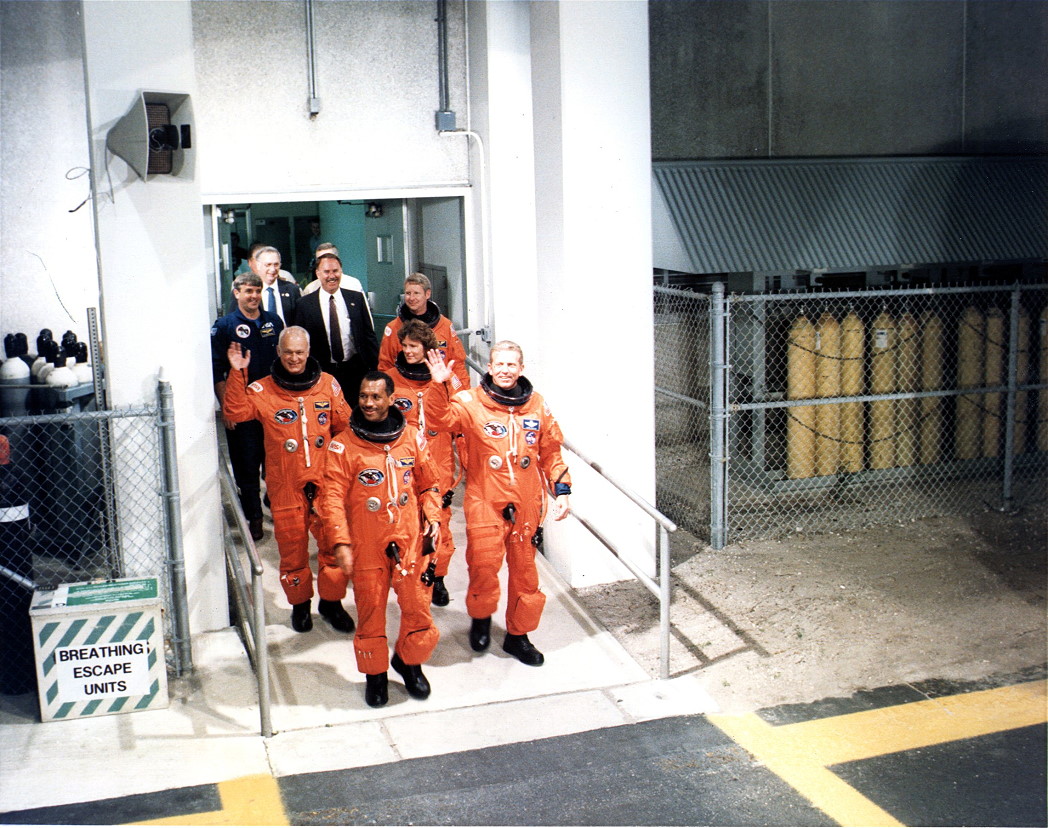
As McCandless performed his comm checks, he could not resist pointing out the favorable weather. “Looks like a nice day down here,” he told Capcom Steve Oswald.
“That’s good,” replied Oswald, keenly aware that the weather also needed to be acceptable at the Transoceanic Abort Landing (TAL) sites. “We’re working on other places.”
Again, the countdown clock proceeded normally, this time ticking down to T-31 seconds, at which point the Ground Launch Sequencer (GLS) prepared to hand off control to Discovery’s on-board computers. Another hold was called, agonizingly, when software failed to shut down the liquid oxygen outboard fill-and-drain valves on the ground support equipment. In short order, the issue was corrected and STS-31 got underway a few minutes later than intended at 8:33 a.m. EDT.
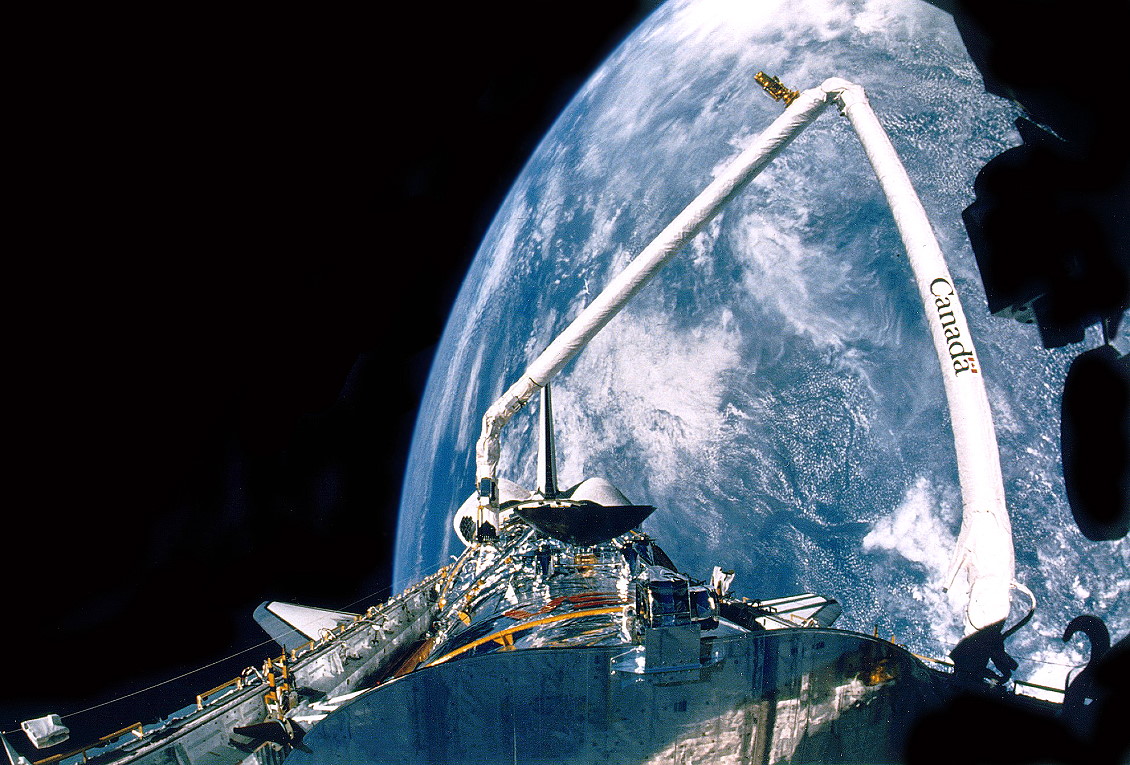
“Our window on the Universe,” came the launch announcer’s exuberant commentary as Discovery speared away from Earth and commenced a noticeable roll program maneuver, en-route to her high orbit. Aboard the shuttle, the crew—all of whom had flown before, in the pre-51L timeframe, wearing light blue coveralls—was surprised at the sensation of “bouncing” in the new orange pressure suits.
Bolden certainly felt the “twang” associated with the ignition of the shuttle’s three main engines and the crackling vibration of the twin Solid Rocket Boosters (SRBs) and described the remainder of the ascent as a textbook one. Launched on a direct-insertion profile, his great surprise came after Main Engine Cutoff (MECO), when he could not at first see the Home Planet.
The view of Earth, when it came, was truly spectacular. Flying higher than any spacefarers since Apollo 17, the curvature of Earth and its true nature as a planet was obvious. “It was truly noticeable and impressive on-board,” Hawley told the post-flight press conference. Although the five astronauts had six previous shuttle flights between them, none of them had voyaged any higher than about 240 miles (390 km).
But there was much to do. As they glanced out of Discovery’s aft flight deck windows, there was Hubble, filling the payload bay, its silver insulation glittering in the stark orbital sunlight. The deployment of this gigantic satellite, planned for the second day of the mission, would demand close co-ordination between the astronauts and a tense Mission Control team. And as circumstances would transpire, not everything would go to plan.
The second part of this article will appear tomorrow.
.
.
FOLLOW AmericaSpace on Facebook and Twitter!
.




